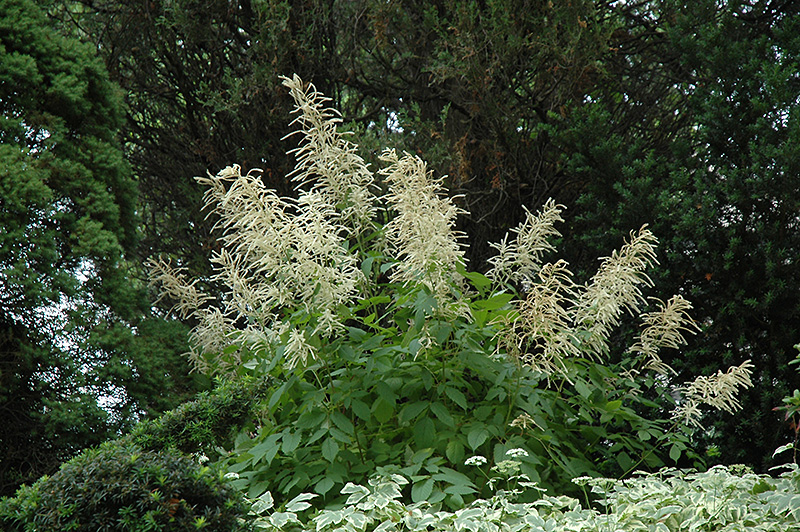Height: 5 feet
Spread: 4 feet
Sunlight:
![]()
![]()
Hardiness Zone: 3a
Other Names: Goat's Beard
Ornamental Features
Goatsbeard features showy spikes of creamy white flowers at the ends of the stems from late spring to mid summer. The flowers are excellent for cutting. Its pointy compound leaves remain emerald green in colour throughout the season.
Landscape Attributes
Goatsbeard is a dense herbaceous perennial with an upright spreading habit of growth. Its medium texture blends into the garden, but can always be balanced by a couple of finer or coarser plants for an effective composition.
This is a relatively low maintenance plant, and is best cleaned up in early spring before it resumes active growth for the season. Deer don't particularly care for this plant and will usually leave it alone in favor of tastier treats. It has no significant negative characteristics.
Goatsbeard is recommended for the following landscape applications;
- Mass Planting
- Hedges/Screening
- General Garden Use
- Groundcover
- Bog Gardens
Planting & Growing
Goatsbeard will grow to be about 5 feet tall at maturity, with a spread of 4 feet. It grows at a medium rate, and under ideal conditions can be expected to live for approximately 15 years. As an herbaceous perennial, this plant will usually die back to the crown each winter, and will regrow from the base each spring. Be careful not to disturb the crown in late winter when it may not be readily seen!
This plant does best in partial shade to shade. It prefers to grow in average to moist conditions, and shouldn't be allowed to dry out. It is not particular as to soil type or pH. It is somewhat tolerant of urban pollution. Consider applying a thick mulch around the root zone over the growing season to conserve soil moisture. This species is not originally from North America.



